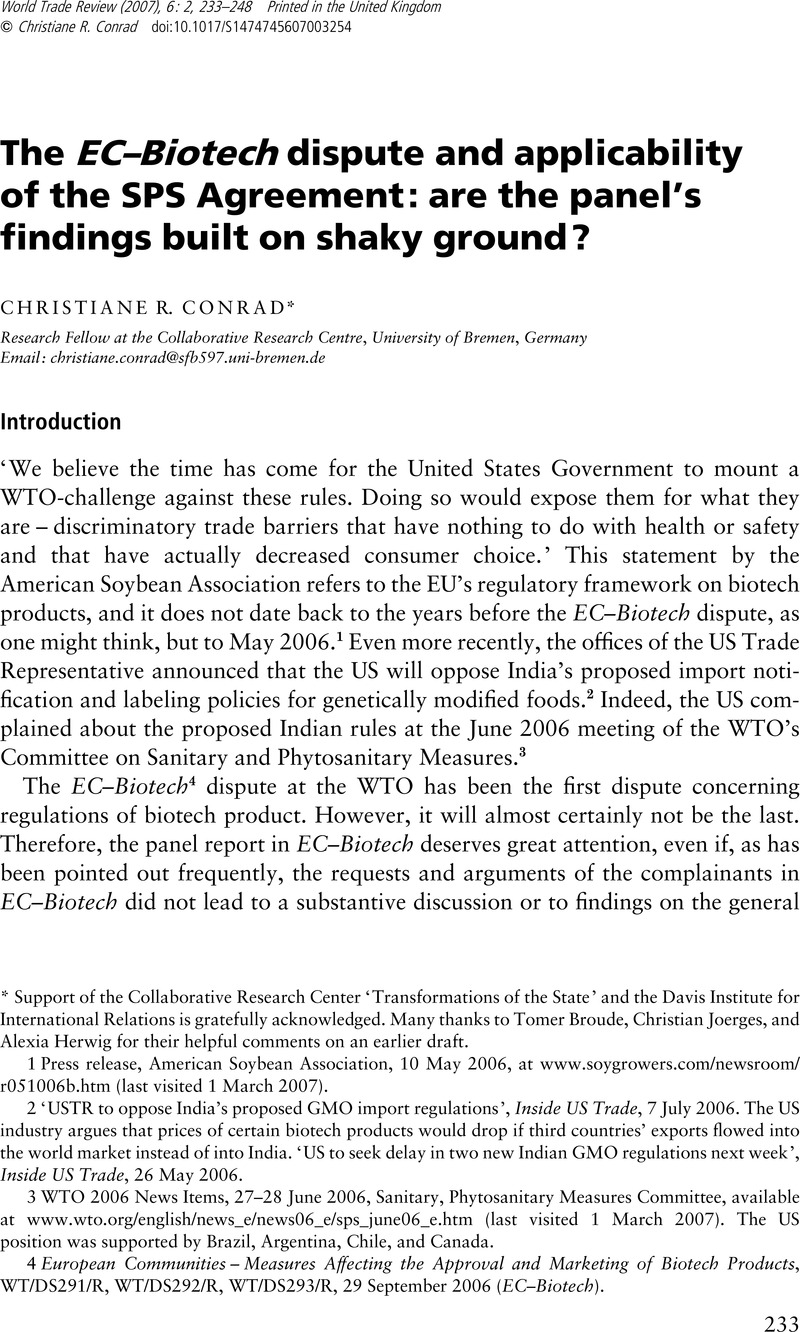Crossref Citations
This article has been cited by the following publications. This list is generated based on data provided by Crossref.
Disdier, Anne-Celia
and
Fontagne, Lionel
2009.
Trade Impact of European Measures on GMOS Condemned by the WTO Panel.
SSRN Electronic Journal,
Disdier, Anne-Célia
and
Fontagné, Lionel
2010.
Trade impact of European measures on GMOs condemned by the WTO panel.
Review of World Economics,
Vol. 146,
Issue. 3,
p.
495.
Petetin, Ludivine
2014.
Frankenburgers, Risks and Approval.
European Journal of Risk Regulation,
Vol. 5,
Issue. 2,
p.
168.
Papa, Maria Irene
2019.
Interpretations of the United Nations Convention on the Law of the Sea by International Courts and Tribunals.
p.
321.
Zhao, Xinyan
2025.
Integrating the UN SDGs into WTO Law.
Vol. 41,
Issue. ,
p.
191.



